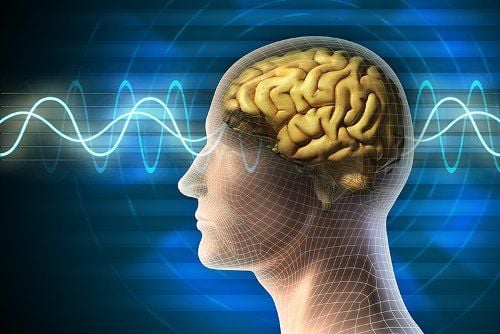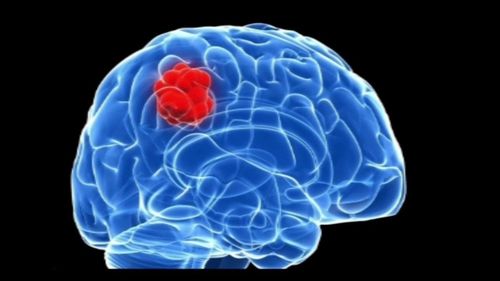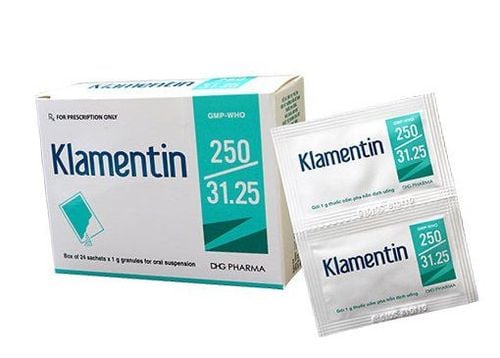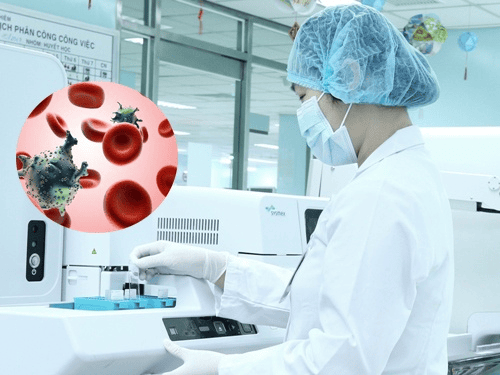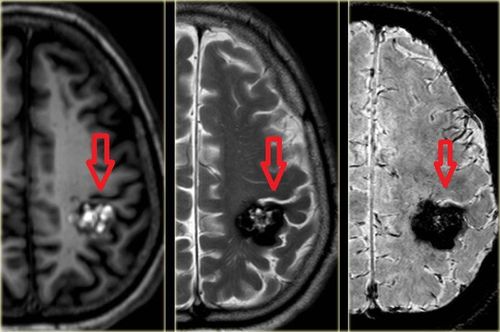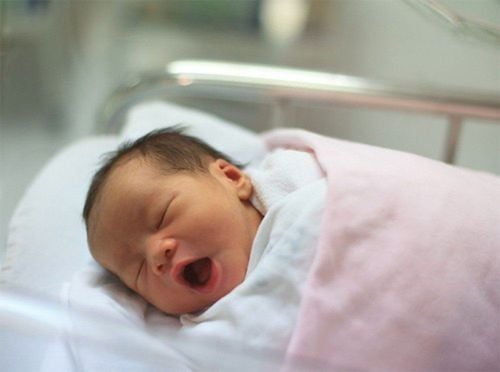This is an automatically translated article.
Cerebrospinal fluid test is one of the most commonly used clinical tests to diagnose and treat the most common disease in meningitis. However, this is an invasive procedure, there are many risks, in addition to the medical staff, the patient should also understand the basic characteristics, which include the procedure for testing the cerebrospinal fluid.1. What is cerebrospinal fluid?
The human body exists a type of fluid in the central nervous system, between the ventricles, the brainstem and the subarachnoid space called cerebrospinal fluid. The cerebrospinal fluid is secreted from the choroid plexus in the system of ventricular cisterns, mainly from the lateral ventricles through the third ventricle, down into the fourth ventricle and down into the subarachnoid spaces. The average volume of cerebrospinal fluid in each person is about 150 to 180 ml, and is always renewed every day at a frequency of about 3 times / day. Although it is secreted continuously from the choroid plexus, the volume of cerebrospinal fluid is kept in balance by the reabsorption of Pacchioni granules in the arachnoid membrane at a rate equivalent to the rate of cerebrospinal fluid secretion, approximately 20ml of fluid per hour.
Cerebrospinal fluid has an irreplaceable important function in the human body, the most important of which is to protect the brain and spinal cord from external trauma, and at the same time contribute to nourishment and metabolism. substances in the central nervous system.
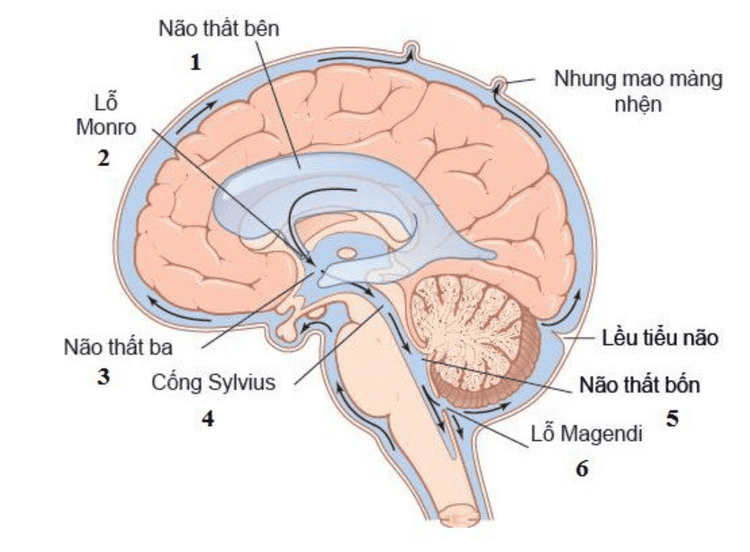
Hệ thống dịch não tủy
2. Cerebrospinal fluid test
Cerebrospinal fluid test is one of the most commonly performed clinical tests to diagnose and rule out some diseases related to the central nervous system. The test is carried out by taking cerebrospinal fluid from the ventricles, great cisterns or subarachnoid spaces at respective locations and analyzing its physical, biochemical, and cellular characteristics. CSF obtained from different sites will have different biochemical components, the method of obtaining CSF from the subarachnoid space in the lumbar spinal canal is the most commonly used method. In addition, the penetration into the cerebrospinal fluid-containing compartments is also used in the delivery of drugs to the subarachnoid space or the introduction of local anesthetics for epidural anesthesia...
2.1 Indications for performing the examination Cerebrospinal fluid test Indications for performing a CSF test are quite diverse, including:
Diagnosis of diseases related to the nervous system such as meningitis, meningitis, subarachnoid hemorrhage Evaluation of circulation of the cerebrospinal fluid Contrast in the canal in support of imaging methods such as myelogram with contrast Applied in the treatment of diseases of the nervous system by the introduction of drugs directly into the fluid CSF includes antibiotics, cytotoxic drugs in cancer treatment, corticosteroids Local anesthesia in surgery is also an application of lumbar puncture procedure.
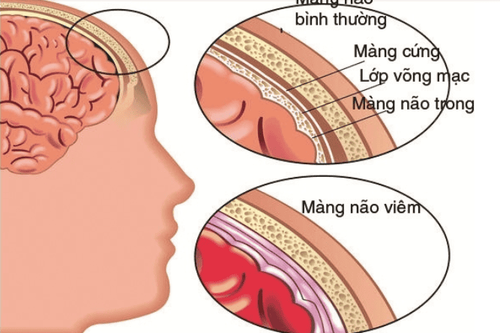
Bệnh viêm màng não cần chỉ định xét nghiệm dịch não tủy
However, this is an interventional procedure, so there are always risks such as medullary incarceration, bleeding in the subarachnoid space or epidural space, headache, infection at the needle puncture site, meningitis. ,... Therefore, depending on each specific case, the doctor needs to consider before making the decision to have a lumbar puncture.
2.2 Contraindications Raised intracranial pressure due to many causes, including brain tumor or severe cerebral edema:
There is injury to the cervical spinal cord Acute inflammation in the skin area where the brain aspiration procedure is performed marrow. Patients with coagulation disorders or other blood disorders.

Người có tổn thương tủy sống đoạn cổ
3. Cerebrospinal fluid test procedure
Testing of CSF should be performed sequentially according to the following steps:
3.1 Prepare equipment Includes: Gauze, dry cotton, sterile gloves, specialized needle, test tube to store CSF samples , anesthetics, antiseptic alcohol and emergency drugs. Instruments for performing CSF testing should generally be sterile to avoid complications of central nervous system infection, which is a serious complication.
3.2 Preparation of the patient Before performing the CSF test, the patient should be evaluated in general by taking vital signs, ophthalmoscopy, electrocardiogram, baseline coagulation function test and test response to anesthetic. Clearly explaining the procedure to the patient is an important step that should not be overlooked. This step helps patients feel secure and motivated, making it easier for them to cooperate with medical staff.
Place the patient in the supine position with head flexed to the chest, knees bent close to the chest with both hands hugging the knees. If the patient is difficult to reach such as the elderly, children, need an assistant to hold the patient in the correct position. The puncture site should be exposed and disinfected widely, usually the lumbar region at the level of L4-L5.
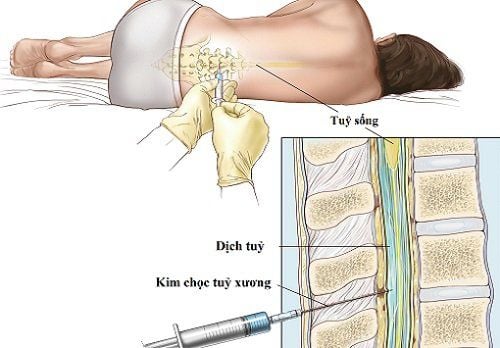
Quy trình xét nghiệm dịch não tủy
3.2 Carrying out a lumbar puncture Conduct a lumbar puncture with the following steps:
Medical staff wear a hat, sterile gloves and a medical mask Determine the puncture site: Usually the space between two nodes lumbar spine L3-L4 or L4-L5, L5-S1. Select these sites to avoid injury to the spinal cord Layer by layer anesthesia at the puncture site Use a specialized needle to pierce the skin at the creation site with an angle of 45 degrees to the skin surface, the needle pointing to the opposite direction toward the patient's head. Then continue to insert the needle into the subarachnoid space by perforating multiple layers of ligaments and dura. Experienced people often share the sign that the needle is in the subarachnoid space is when the hand feels light after passing through many layers of ligaments and dura. Withdrawing the needle barrel slowly will see the cerebrospinal fluid flowing out in drops. Allow cerebrospinal fluid to flow into pre-prepared test tubes. Meanwhile, attention should be paid to the color, turbidity, and flow rate of the cerebrospinal fluid. After the CSF is obtained, the puncture site should be bandaged and the patient lying on the stomach or head low for 2 to 4 hours. During the first hours after the procedure, the medical staff should advise the patient to drink plenty of fluids, averaging about 1.5 liters/hour during the first hour. The patient should also be reassured by explaining the discomfort that may appear after a CSF such as headache, pain at the puncture site, neck fatigue.

Sau chọc dịch não tủy, người bệnh cần bổ sung 1,5 lít nước/ giờ
Test of cerebrospinal fluid gives results based on parameters of density and composition in cerebrospinal fluid. Depending on each patient, the doctor will base on the test results to advise, give specific treatment methods and make a more accurate prognosis.
Vinmec International General Hospital is one of the hospitals that not only ensures professional quality with a team of leading medical doctors, modern equipment and technology, but also stands out for its examination and consultation services. comprehensive and professional medical consultation and treatment; civilized, polite, safe and sterile medical examination and treatment space. Customers when choosing to perform tests here can be completely assured of the accuracy of test results.
To register, customers can contact Vinmec Health System nationwide or register online HERE.
MORE:
Meningitis curable? Learn about cerebrospinal fluid test to find the cause of headache Spinal puncture to diagnose meningitis




